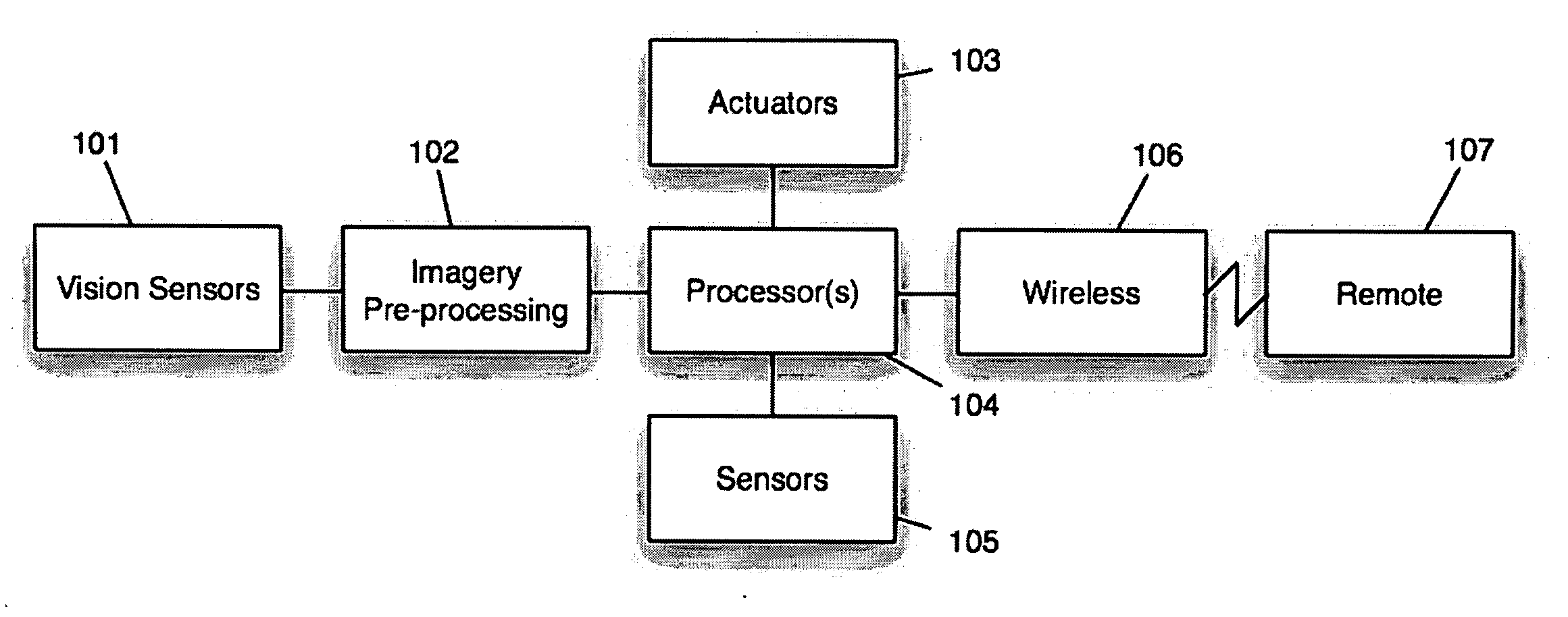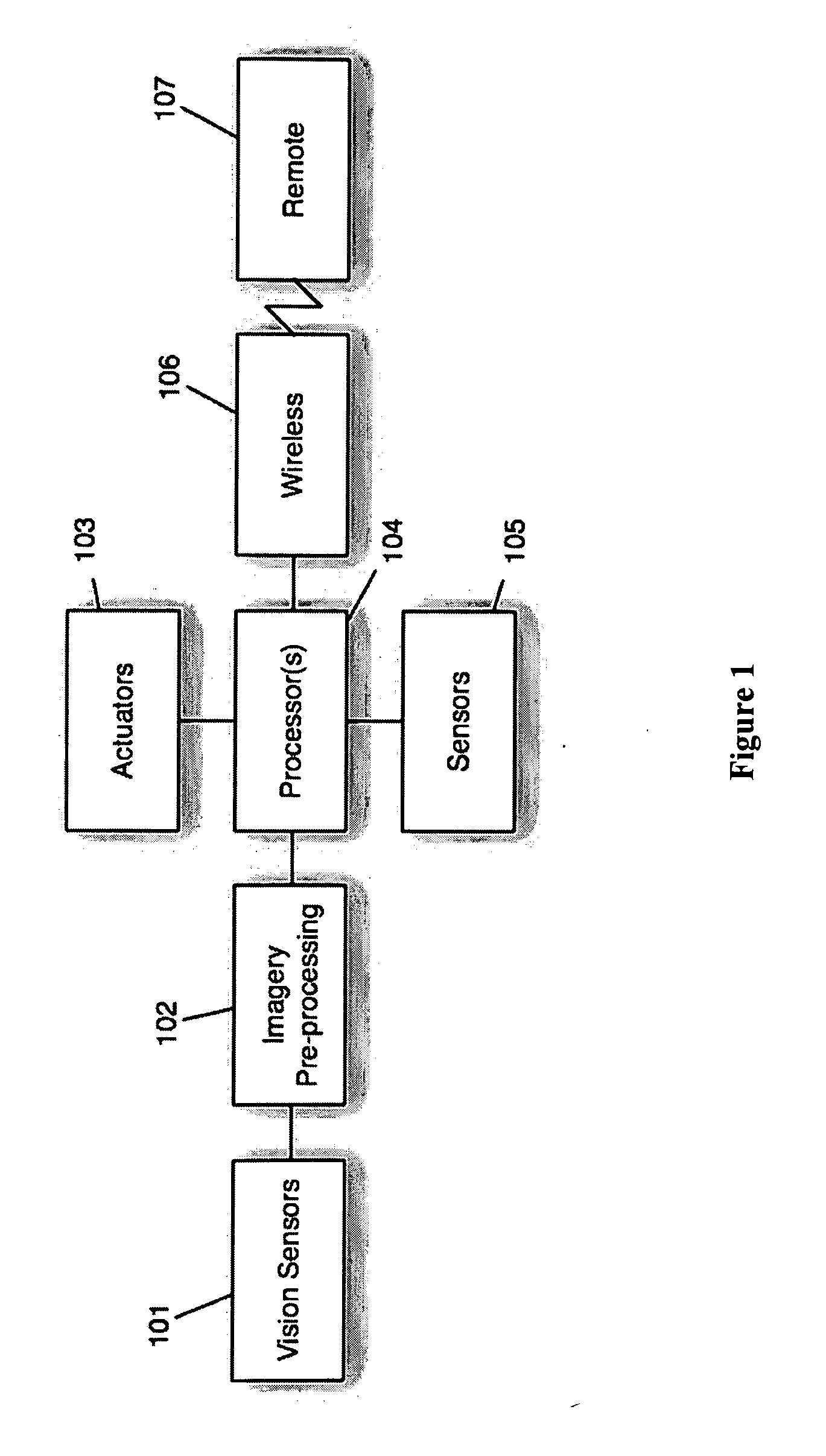System and method for onboard vision processing
a vision processing and system technology, applied in the field of unmanned aerial vehicles, can solve the problems of not being able to make the transition to a fully autonomous state, not being able to fly in the presence of obstacles, and limited current uavs, so as to increase the capability of vision-based estimation
- Summary
- Abstract
- Description
- Claims
- Application Information
AI Technical Summary
Benefits of technology
Problems solved by technology
Method used
Image
Examples
Embodiment Construction
[0031] This invention is not limited in its application to the details of construction and the arrangement of components set forth in the following description or illustrated in the drawings. The invention is capable of other embodiments and of being practiced or of being carried out in various ways. Also, the phraseology and terminology used herein is for the purpose of description and should not be regarded as limiting. The use of “including,”“comprising,” or “having,”“containing,”“involving,” and variations thereof herein, is meant to encompass the items listed thereafter, and equivalents, as well as additional items.
[0032] As described above, the current use of vision in UAVs to navigate is problematic in all but a few isolated, ideal cases and. A system that improves upon what can be estimated by vision alone is needed. Motion sensors (e.g., accelerometers, gyroscopes, and GPS) are present on modem UAVs and are used to support position-based navigation. While such sensors are ...
PUM
 Login to View More
Login to View More Abstract
Description
Claims
Application Information
 Login to View More
Login to View More - R&D
- Intellectual Property
- Life Sciences
- Materials
- Tech Scout
- Unparalleled Data Quality
- Higher Quality Content
- 60% Fewer Hallucinations
Browse by: Latest US Patents, China's latest patents, Technical Efficacy Thesaurus, Application Domain, Technology Topic, Popular Technical Reports.
© 2025 PatSnap. All rights reserved.Legal|Privacy policy|Modern Slavery Act Transparency Statement|Sitemap|About US| Contact US: help@patsnap.com



